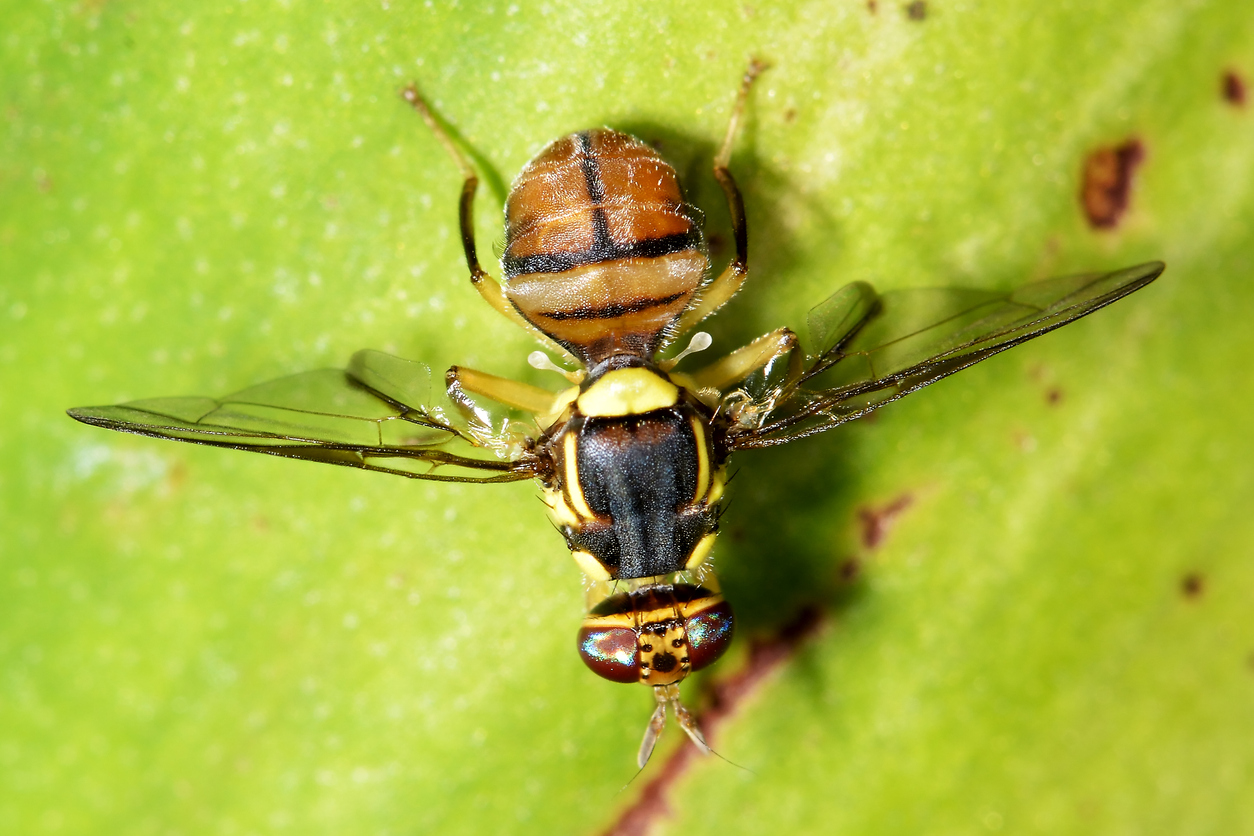Three fruit flies have been found in Auckland within the past week, prompting the Ministry for Primary Industries (MPI) to review the biosecurity protections in place to screen passengers arriving by air and cruise ship.
Two of the flies were male Queensland fruit flies and both were found on the North Shore, with the first trapped in Devonport on 14 February and the second a week later in Northcote. Before these latest discoveries, Queensland fruit flies had been found five times in the upper North Island in the past decade.
The third fruit fly was a male facialis fruit fly, native to Tonga. It was found in Ōtara earlier this week.
Both fruit fly species are considered threats to New Zealand’s horticulture industry. Dr Karen Armstrong, from the Bio-Protection Research Institute, said apples, citrus, stone fruit, pears, berries, and avocado crops were all attractive potential hosts for the Queensland fruit fly.
Tongan facialis fruit flies are considered less of a risk because they don’t have as broad a range of potential hosts – though they do include citrus, capsicum, mango and avocado – and the climate in south Auckland isn’t as favourable as it is in Tonga.
New Zealand and Chile are the only major horticultural producing countries in the world that are free from fruit fly species that attack commercial fruit, Dr Armstrong said.
One possible gap in biosecurity detection has been exposed. Newshub reported that thousands of cruise ship passengers have gone unchecked by MPI. Last year 10 unaccredited vessels – meaning MPI did not have detailed information about the food they were carrying – docked in NZ last year without being checked by biosecurity detection dogs.
Biosecurity Minister Damian O’Connor said he was concerned about any ships that were not being checked. There had been a shortage of biosecurity dogs and more were being trained. “We have to physically get dogs that are suitably trained to do the right thing,” he told Newshub.
O’Connor has asked authorities to check all fruit fly traps on the North Shore by the weekend, and all 2000 traps across the rest of Auckland as soon as possible.
MPI director-general Ray Smith said an independent review of “air and cruise passenger pathways” would start next week. “We want to ensure we have the best system possible.”
He said while there had now been two finds of the Queensland fruit fly, it did not mean New Zealand had an outbreak of fruit fly.
“We are totally focused on finding out if there is an incursion of the Queensland fruit fly in these areas. At the moment, these are two single males found quite some distance apart, and there’s no evidence of a breeding population.
“We have an absolute commitment to tracking down these unwanted pests and ensuring New Zealand is free of harmful fruit fly.”
Writing on Newsroom, Professor Jacqueline Beggs, from the University of Auckland, said the detections should be celebrated because they show New Zealand’s biosecurity system operating at its best.
“Early detection and effective control means fruit flies have not established in New Zealand. With such high stakes, it is critical that we keep going with research to improve surveillance, eradication and control tools,” she said.
Coverage of this issue includes:
Newshub: Thousands of NZ cruise ship tourists going unchecked by MPI
RNZ: Second Queensland fruit fly found in Auckland
Stuff: Otara fruit fly restrictions remain while Auckland search continues
TVNZ: Second Queensland fruit fly found on Auckland’s North Shore
NZ Herald: NZ dollar falls after second fruit fly discovered
Newsroom: Why we should celebrate NZ’s latest fruit fly detection
